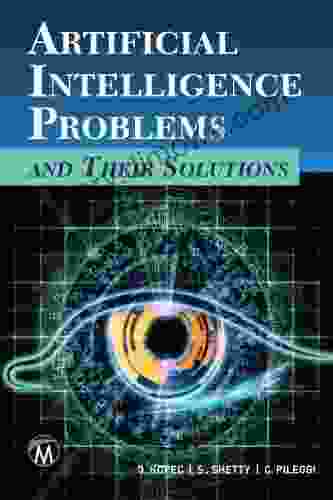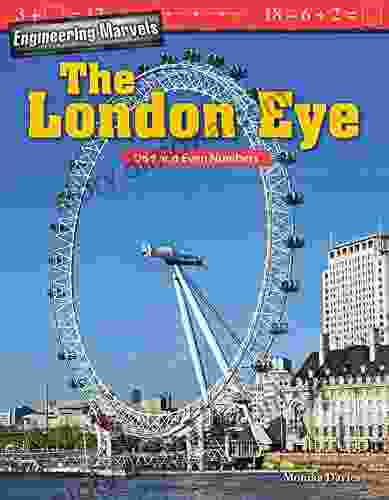Physics With Ray Free Electron Lasers

Free electron lasers (FELs) are a class of lasers that use a beam of relativistic electrons to generate coherent electromagnetic radiation. FELs are unique among lasers in that they can produce radiation over a wide range of wavelengths, from the infrared to the X-ray regime. This makes them a versatile tool for a variety of applications, including scientific research, medical imaging, and industrial processing.
4 out of 5
| Language | : | English |
| File size | : | 6894 KB |
| Text-to-Speech | : | Enabled |
| Screen Reader | : | Supported |
| Print length | : | 353 pages |
The basic principle of operation of an FEL is as follows. A beam of electrons is accelerated to relativistic speeds by a linear accelerator. The electrons then pass through a series of magnets, which cause them to undergo a process called synchrotron radiation. This radiation is then amplified by a process called stimulated emission, which results in the production of a coherent beam of electromagnetic radiation.
The wavelength of the radiation produced by an FEL is determined by the energy of the electron beam and the strength of the magnets. By varying these parameters, FELs can be tuned to produce radiation at a specific wavelength.
FELs have a number of advantages over other types of lasers. First, FELs can produce radiation over a much wider range of wavelengths than other lasers. Second, FELs are more efficient than other lasers, meaning that they can produce more power with the same amount of input energy. Third, FELs are more compact than other lasers, making them easier to transport and use.
FELs are used in a variety of applications, including:
* Scientific research: FELs are used to study a wide range of phenomena, including the structure of atoms and molecules, the properties of materials, and the behavior of living cells. * Medical imaging: FELs are used to create images of the inside of the body, which can help doctors diagnose and treat diseases. * Industrial processing: FELs are used to cut, weld, and drill materials, which can be used to manufacture a variety of products.
Physics of FELs
The physics of FELs is complex and involves a number of different physical processes. The following is a brief overview of the basic physics of FELs.
Electron beam dynamics
The electron beam in an FEL is accelerated to relativistic speeds by a linear accelerator. The electrons then pass through a series of magnets, which cause them to undergo a process called synchrotron radiation. This radiation is then amplified by a process called stimulated emission, which results in the production of a coherent beam of electromagnetic radiation.
The energy of the electron beam determines the wavelength of the radiation produced by the FEL. The higher the energy of the electron beam, the shorter the wavelength of the radiation.
The strength of the magnets in the FEL also affects the wavelength of the radiation. The stronger the magnets, the shorter the wavelength of the radiation.
Synchrotron radiation
Synchrotron radiation is a type of electromagnetic radiation that is emitted by charged particles when they are accelerated through a magnetic field. The radiation is emitted in a cone-shaped beam, with the peak intensity of the radiation occurring at a wavelength that is inversely proportional to the radius of curvature of the magnetic field.
In an FEL, the electrons are accelerated through a series of magnets, which causes them to emit synchrotron radiation. The synchrotron radiation is then amplified by a process called stimulated emission, which results in the production of a coherent beam of electromagnetic radiation.
Stimulated emission
Stimulated emission is a process in which an atom or molecule emits a photon of light in response to an incoming photon of light. The incoming photon stimulates the atom or molecule to emit a photon of light with the same wavelength and phase as the incoming photon.
In an FEL, the electrons are stimulated to emit photons of light by the synchrotron radiation. The photons of light then interact with the electrons in a way that causes them to emit more photons of light. This process continues until a coherent beam of electromagnetic radiation is produced.
Applications of FELs
FELs have a wide range of applications, including:
* Scientific research: FELs are used to study a wide range of phenomena, including the structure of atoms and molecules, the properties of materials, and the behavior of living cells. * Medical imaging: FELs are used to create images of the inside of the body, which can help doctors diagnose and treat diseases. * Industrial processing: FELs are used to cut, weld, and drill materials, which can be used to manufacture a variety of products.
FELs are a versatile tool that can be used in a variety of applications. As the technology continues to develop, FELs are expected to play an increasingly important role in our lives.
Physics With Ray Free Electron Lasers provides a comprehensive and up-to-date overview of the physics of free electron lasers (FELs),including their basic principles, gain mechanisms, and applications in various fields of science and technology. The book is written by a team of leading experts in the field and is intended to serve as a reference for researchers, graduate students, and advanced undergraduates interested in FELs.
4 out of 5
| Language | : | English |
| File size | : | 6894 KB |
| Text-to-Speech | : | Enabled |
| Screen Reader | : | Supported |
| Print length | : | 353 pages |
Do you want to contribute by writing guest posts on this blog?
Please contact us and send us a resume of previous articles that you have written.
 Book
Book Novel
Novel Page
Page Chapter
Chapter Text
Text Story
Story Genre
Genre Reader
Reader Library
Library Paperback
Paperback E-book
E-book Magazine
Magazine Newspaper
Newspaper Paragraph
Paragraph Sentence
Sentence Bookmark
Bookmark Shelf
Shelf Glossary
Glossary Bibliography
Bibliography Foreword
Foreword Preface
Preface Synopsis
Synopsis Annotation
Annotation Footnote
Footnote Manuscript
Manuscript Scroll
Scroll Codex
Codex Tome
Tome Bestseller
Bestseller Classics
Classics Library card
Library card Narrative
Narrative Biography
Biography Autobiography
Autobiography Memoir
Memoir Reference
Reference Encyclopedia
Encyclopedia Lee Wardlaw
Lee Wardlaw Lisa Owings
Lisa Owings Jennifer Mcclearen
Jennifer Mcclearen Mac Barnett
Mac Barnett Lynn Arthur Steen
Lynn Arthur Steen Rayne Lacko
Rayne Lacko Linda S Hirst
Linda S Hirst Mamma Margaret
Mamma Margaret Isabella Emma
Isabella Emma Pablo Amorim
Pablo Amorim Morrisen Mamutse
Morrisen Mamutse Maksim Andreev
Maksim Andreev Lois Peterson
Lois Peterson Ludmila Carluen Barrica
Ludmila Carluen Barrica Shaun David Hutchinson
Shaun David Hutchinson Robyn Buttars
Robyn Buttars Susanne Madsen
Susanne Madsen Marguerite De Navarre
Marguerite De Navarre Sharon Washington
Sharon Washington Lisa Heathfield
Lisa Heathfield
Light bulbAdvertise smarter! Our strategic ad space ensures maximum exposure. Reserve your spot today!

 Terry PratchettIncluding Some Account Of Egypt Translated From The French Of By The English:...
Terry PratchettIncluding Some Account Of Egypt Translated From The French Of By The English:... Kurt VonnegutFollow ·17.8k
Kurt VonnegutFollow ·17.8k Gabriel MistralFollow ·4.6k
Gabriel MistralFollow ·4.6k Allan JamesFollow ·9.8k
Allan JamesFollow ·9.8k Charles ReedFollow ·9.2k
Charles ReedFollow ·9.2k Jonathan FranzenFollow ·19.3k
Jonathan FranzenFollow ·19.3k Mike HayesFollow ·18.5k
Mike HayesFollow ·18.5k Edgar HayesFollow ·7.2k
Edgar HayesFollow ·7.2k Braeden HayesFollow ·6.6k
Braeden HayesFollow ·6.6k

 Charles Bukowski
Charles BukowskiDemystifying AI's Challenges and Embracing its Promise: A...
In the rapidly...

 Roald Dahl
Roald DahlHow America's Most Popular Sport Is Just Getting Started:...
Baseball, the quintessential...

 Francis Turner
Francis TurnerShareholder Empowerment: A New Era in Corporate...
The role of...

 Wesley Reed
Wesley ReedBig Points About The Pack Line Defense: The Ultimate...
The Pack Line Defense is a...
4 out of 5
| Language | : | English |
| File size | : | 6894 KB |
| Text-to-Speech | : | Enabled |
| Screen Reader | : | Supported |
| Print length | : | 353 pages |














